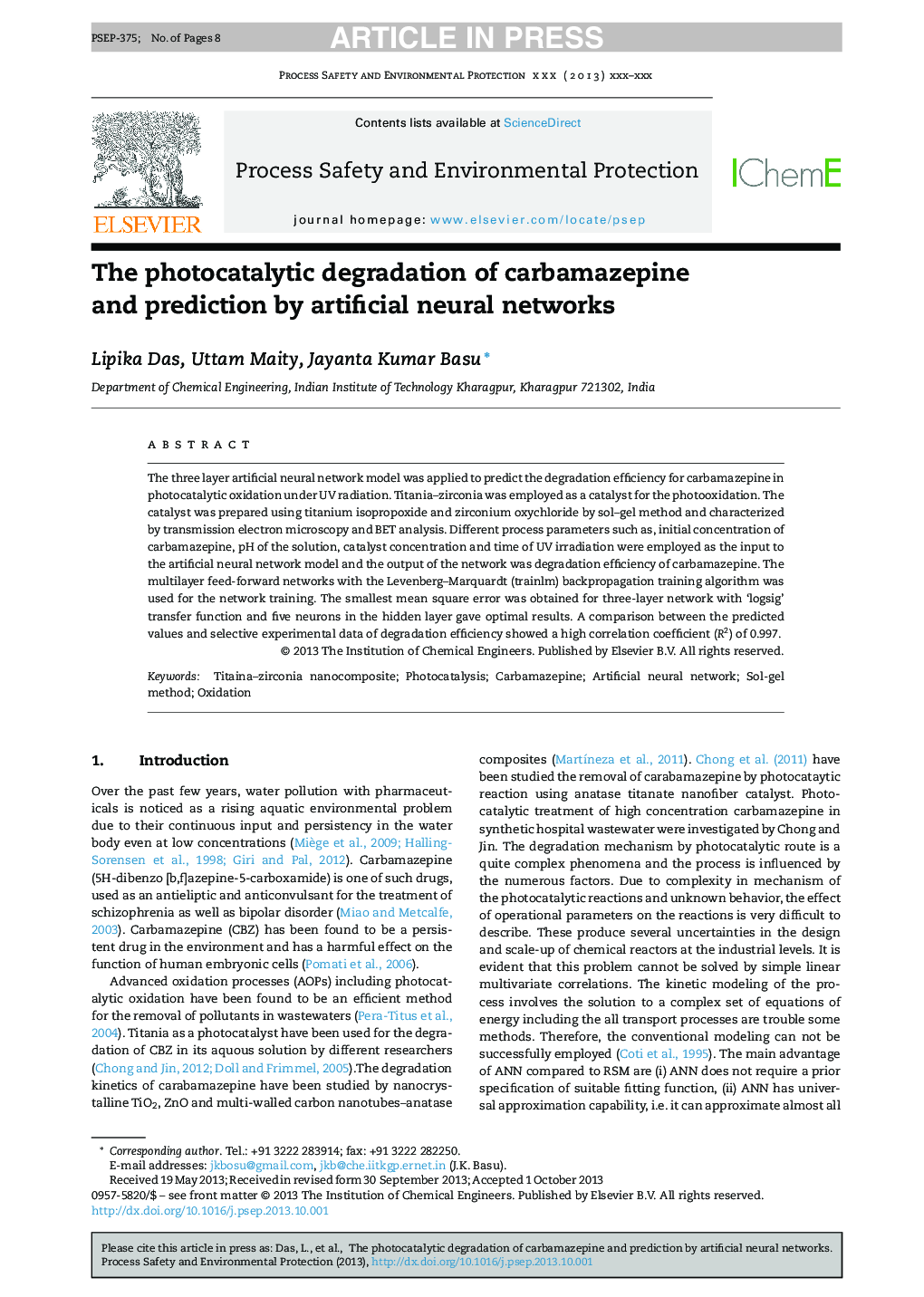| Article ID | Journal | Published Year | Pages | File Type |
|---|---|---|---|---|
| 10373934 | Process Safety and Environmental Protection | 2014 | 8 Pages |
Abstract
The three layer artificial neural network model was applied to predict the degradation efficiency for carbamazepine in photocatalytic oxidation under UV radiation. Titania-zirconia was employed as a catalyst for the photooxidation. The catalyst was prepared using titanium isopropoxide and zirconium oxychloride by sol-gel method and characterized by transmission electron microscopy and BET analysis. Different process parameters such as, initial concentration of carbamazepine, pH of the solution, catalyst concentration and time of UV irradiation were employed as the input to the artificial neural network model and the output of the network was degradation efficiency of carbamazepine. The multilayer feed-forward networks with the Levenberg-Marquardt (trainlm) backpropagation training algorithm was used for the network training. The smallest mean square error was obtained for three-layer network with 'logsig' transfer function and five neurons in the hidden layer gave optimal results. A comparison between the predicted values and selective experimental data of degradation efficiency showed a high correlation coefficient (R2) of 0.997.
Related Topics
Physical Sciences and Engineering
Chemical Engineering
Chemical Health and Safety
Authors
Lipika Das, Uttam Maity, Jayanta Kumar Basu,
